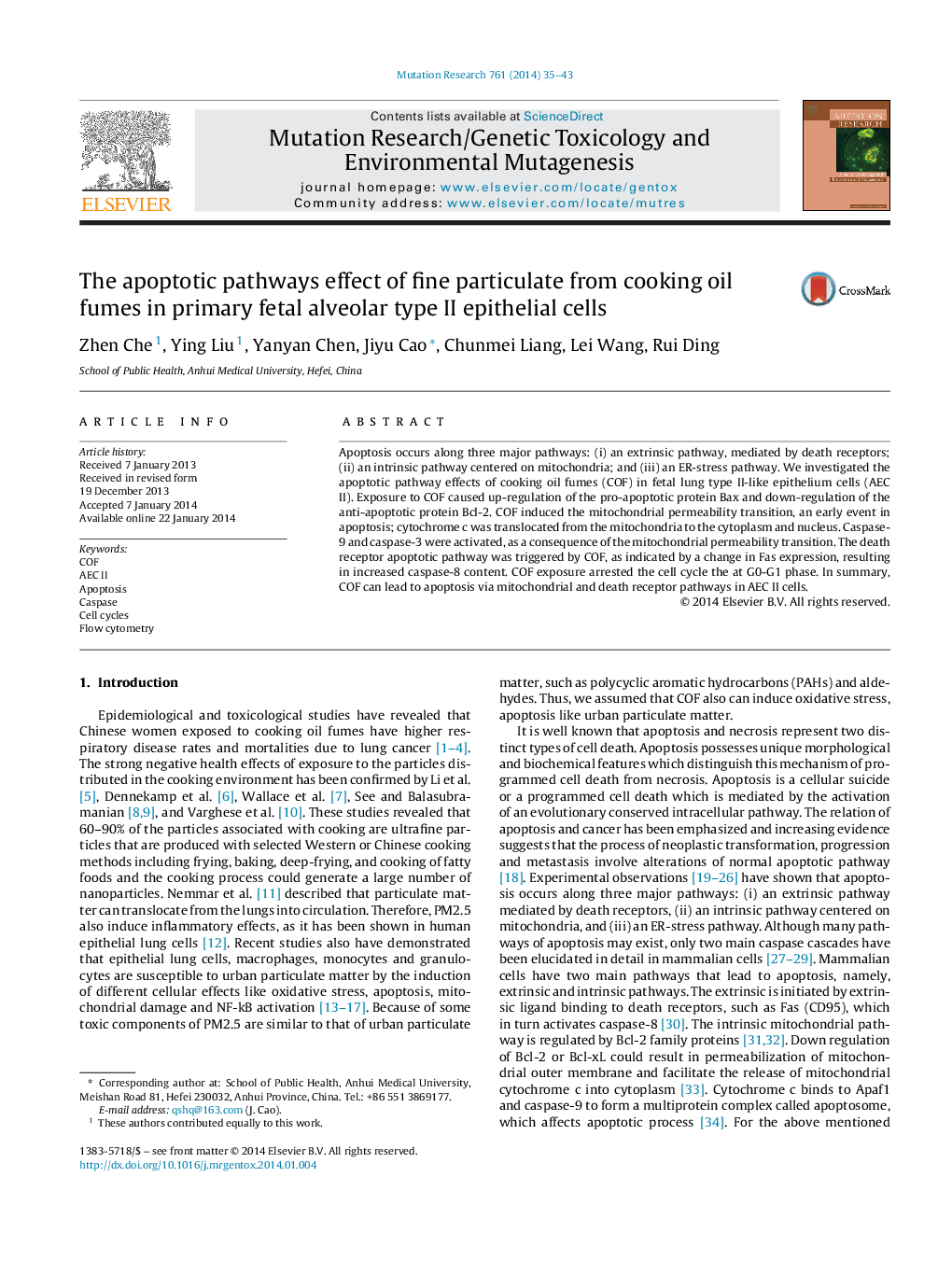| Article ID | Journal | Published Year | Pages | File Type |
|---|---|---|---|---|
| 2147985 | Mutation Research/Genetic Toxicology and Environmental Mutagenesis | 2014 | 9 Pages |
•COFs exposure led to the cytotoxicity of AEC II cells.•The alterations of apoptosis proteins showed apoptosis of cells exposed to COFs.•The cell cycle distribution of AEC II cells exposed to COFs showed G1 arrest.
Apoptosis occurs along three major pathways: (i) an extrinsic pathway, mediated by death receptors; (ii) an intrinsic pathway centered on mitochondria; and (iii) an ER-stress pathway. We investigated the apoptotic pathway effects of cooking oil fumes (COF) in fetal lung type II-like epithelium cells (AEC II). Exposure to COF caused up-regulation of the pro-apoptotic protein Bax and down-regulation of the anti-apoptotic protein Bcl-2. COF induced the mitochondrial permeability transition, an early event in apoptosis; cytochrome c was translocated from the mitochondria to the cytoplasm and nucleus. Caspase-9 and caspase-3 were activated, as a consequence of the mitochondrial permeability transition. The death receptor apoptotic pathway was triggered by COF, as indicated by a change in Fas expression, resulting in increased caspase-8 content. COF exposure arrested the cell cycle the at G0-G1 phase. In summary, COF can lead to apoptosis via mitochondrial and death receptor pathways in AEC II cells.
